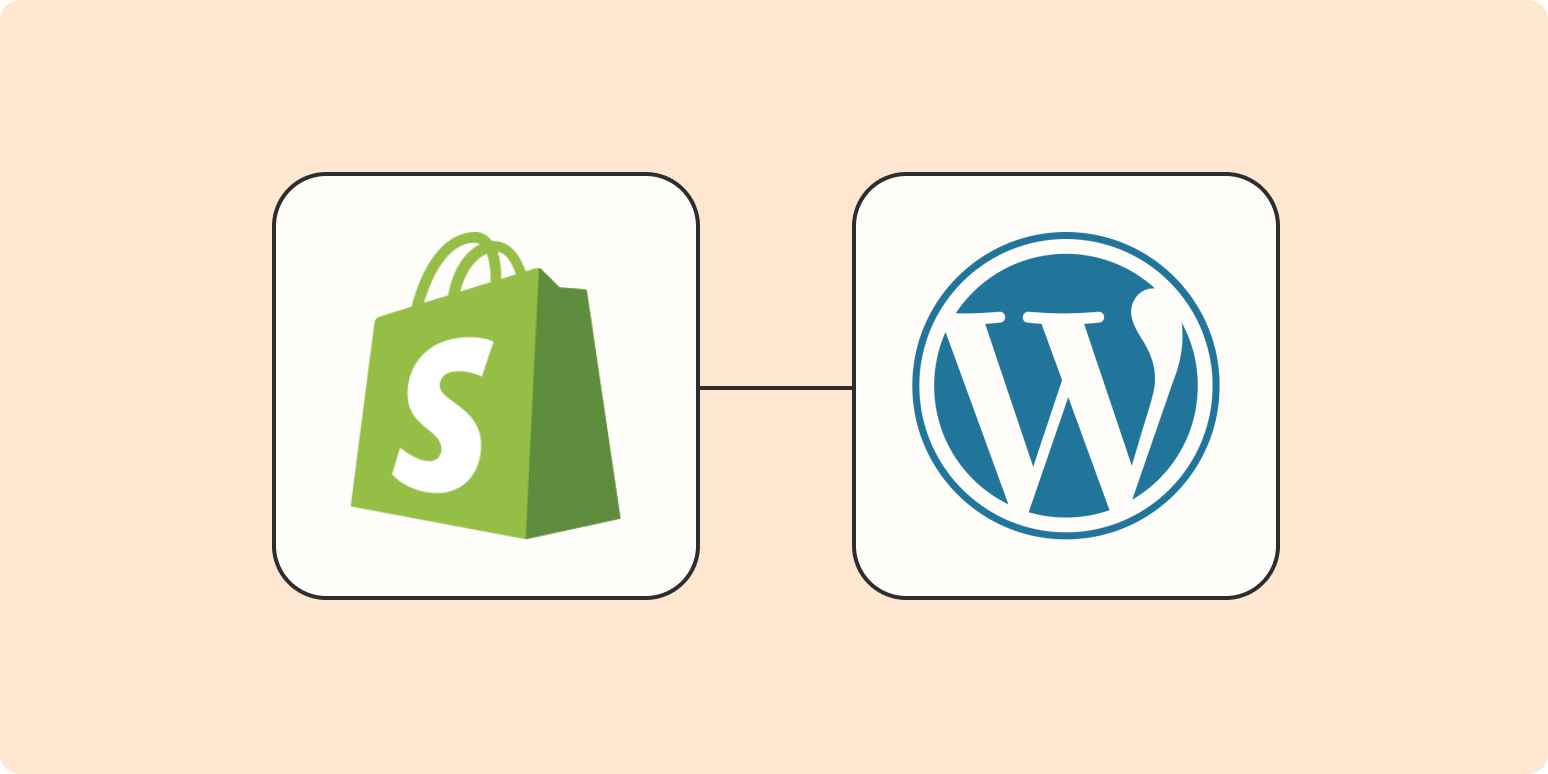If you run an eCommerce store, blog posts can be a great way to bring in new customers and encourage them to purchase from your store. Connect WordPress and Shopify to reach more customers—and make more sales.
WordPress is a content management system (CMS) used to build websites. Many online retailers use it to host their blogs and shops. Shopify is an eCommerce platform that integrates with online stores for services such as secure payment processing, shipping, blogs, and more.
You can use automation to increase your reach—and get more customers—by connecting them together. Reach a wider audience without the manual effort.
New to Zapier? It’s a tool that helps anyone connect apps and automate workflows—without any complicated code. Sign up for free.
Here are 2 different ways you can use automation with Zapier to save time with WordPress and Shopify.
-
Share new Shopify products on your WordPress blog
-
Crosspost between the Shopify and WordPress blog platforms
Before you begin
Before you start creating a Zap—what we call our automated workflows—with Shopify and WordPress, you’ll need to check each app to ensure that you have the right permissions.
-
Shopify: You’ll need admin access to the Shopify account you’re connecting.
-
WordPress: You’ll need admin access to the WordPress account you’re connecting. You’ll also need to install theZapier for WordPress plugin to your WordPress site in order to use this integration.
1. Share new Shopify products on your WordPress blog
Blog posts are a great way to announce new products to your followers. When you connect Shopify and WordPress, you can automatically create a blog post on your WordPress website anytime you add a new product to your Shopify store.
When setting up your Zap, you can add fields from your Shopify product listing to your blog post, including the title, description, photo, and even a link back to where the item is hosted on Shopify.
2. Crosspost between the Shopify and WordPress blog platforms
While Shopify is often thought of first and foremost as an eCommerce platform, it also has blogging capabilities. Though WordPress may be the better-known blogging platform, it never hurts to post content in as many places as possible.
With Zapier, it’s possible to set up a connection between Shopify and WordPress so anytime you add a new post to your WordPress blog it will automatically post to your Shopify blog as well. That way, you’ll be able to reach more customers, no matter which platform they prefer.
If you want even more granular control over posts, you can add extra steps between WordPress and Shopify. For example, you could use a filter step to only post specific types of blog posts to Shopify. Or you could use a delay step to wait to share on Shopify until a few hours or days after publishing a WordPress blog post. If you wanted to only publish part of your post on the Shopify blog, you could also use a formatter step to find and segment specific parts.
Automate your online store
Whether you’re adding new products to your shop or posting about them on your blog, Zapier can help you automate the connection between Shopify and WordPress.
Explore other ways you can connect WordPress and Shopify, or create a Zap from scratch.
New to Zapier? It’s a tool that helps anyone connect apps and automate workflows—without any complicated code. Sign up for free.
[adsanity_group align=’alignnone’ num_ads=1 num_columns=1 group_ids=’15192′]
Need Any Technology Assistance? Call Pursho @ 0731-6725516




